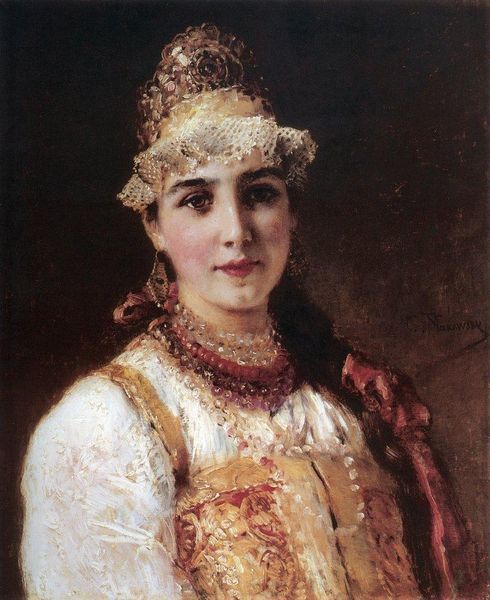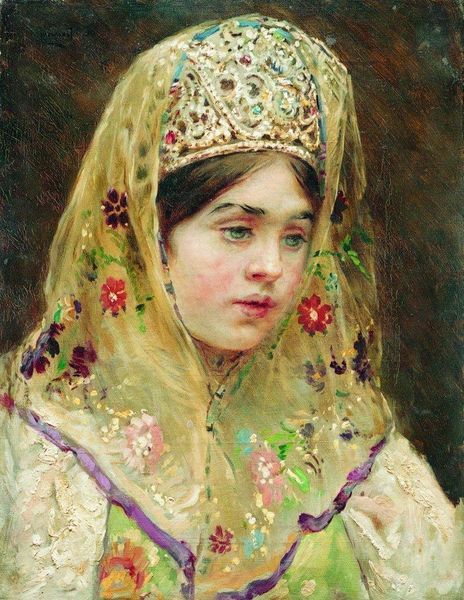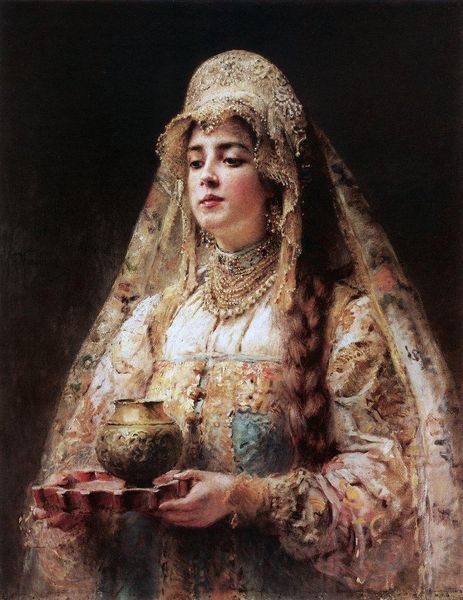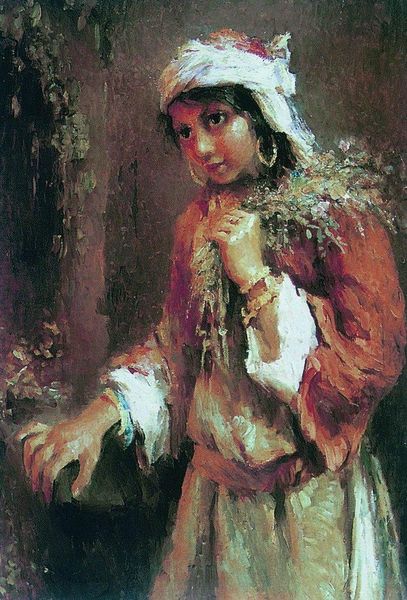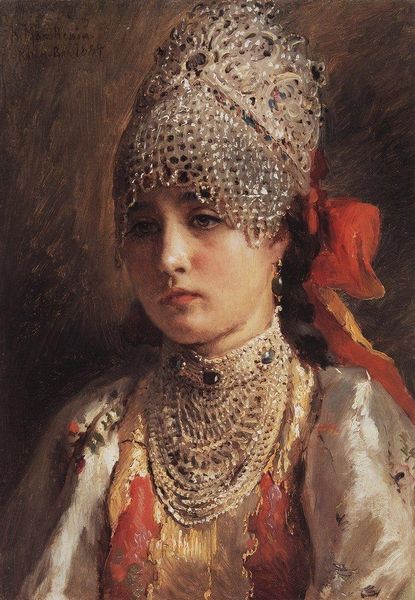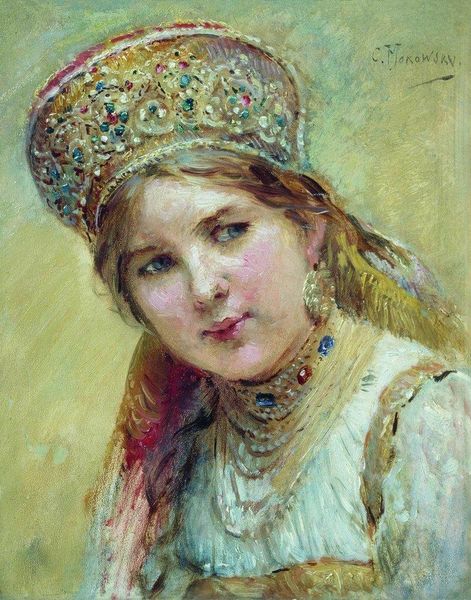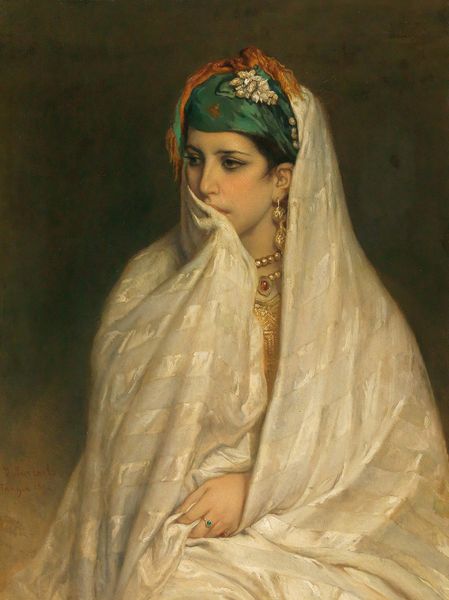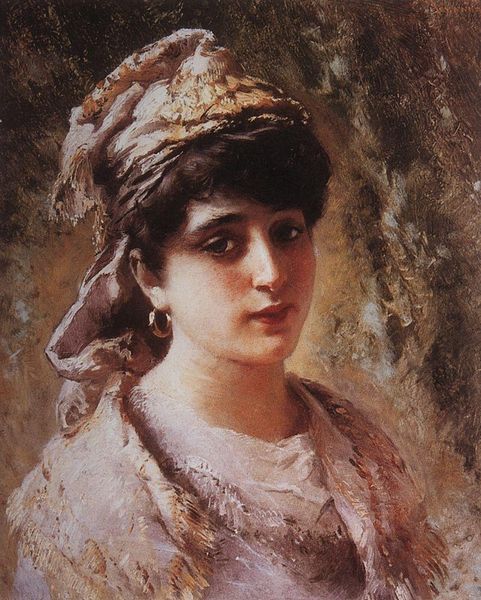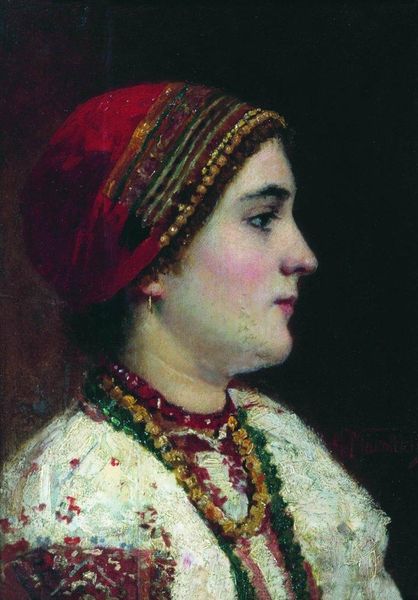
painting, oil-paint
#
portrait
#
portrait
#
painting
#
oil-paint
#
romanticism
#
history-painting
Copyright: Public domain
Curator: Before us we have Konstantin Makovsky's "Boyaryshnya", a work steeped in the Romantic style. Editor: The first thing that strikes me is the stillness of this portrait—a serenity bordering on melancholy. There's an almost ethereal quality to the subject. Curator: Precisely. Makovsky uses oil paint to emphasize texture—notice the layers of pearls, the ornate headdress, and the fabric's subtle patterns. He also relies heavily on circular form with the pearls and in the placement of her features, offering a unique reading for its cultural influences. Editor: Pearls have such a strong association with purity and tears—perhaps indicative of a societal role? And the kokoshnik—that elaborate headdress—speaks volumes. It suggests a woman of status and perhaps, given the historical context implied by her garments, a certain level of expectation, even burden, associated with her family name. Curator: We can read her vestments as signs related to positionality, but equally important is the attention Makovsky gives to the subtle play of light and shadow across her face. Notice how the contrast sharpens at the perimeters, underscoring the picture plane as something constructed with its own interior logic, not as an authentic "window" into a Russian past. Editor: You are right; but for many the garment still conjures a bygone era. Doesn't it stir something in the Russian consciousness—evoking memories of tradition and identity, for some pleasant but for others also a stifling conformity. Curator: The Romantic movement in painting did strive to capture the emotion in historical depiction, yet even such Romantic affectations were bound up within specific structural elements, creating a push and pull effect of symbolic meaning. Editor: So, within those careful constraints, it allows one to view her both as an emblem of an earlier epoch and simultaneously as an individual. This really resonates with those enduring debates about historical burden and self-expression in a cultural moment. Curator: Agreed. What appeared on the surface as another formal portrait holds a subtle depth. Editor: Indeed. There’s always more to a surface than what meets the eye initially, isn’t there?
Comments
No comments
Be the first to comment and join the conversation on the ultimate creative platform.
